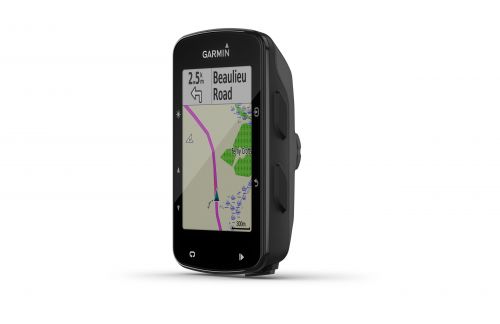OLATHE, Kan. (BRAIN) — Garmin on Wednesday reported record first-quarter revenue of $711 million, up 11 percent, on improved sales of outdoor, fitness, aviation and marine products. Those gains offset continuing declines in the company’s automotive business.
“Both the outdoor and fitness segments delivered solid, double-digit revenue growth, and we remain confident in our wearable product offerings. We are pleased with our first-quarter results and look forward to launching new, compelling products throughout the remainder of the year,” Garmin president and CEO Cliff Pemble said in a statement.
Operating income for the quarter totaled $142 million, up 22 percent.
Outdoor revenue rose 24 percent to $144 million on strong demand for wearables, the company stated. Garmin also began shipping its new Descent dive watch during the quarter.
In Garmin’s fitness segment, which includes the company’s cycling products, revenue rose 20 percent to $166 million, with growth in advanced, GPS-enabled wearables countering ongoing declines in basic activity trackers. Garmin saw year-over-year losses in the fitness segment every quarter last year due largely to slumping sales of lower-end activity trackers.
“The general trend for basic trackers continues. As we have been remarking and the market has been demonstrating, there are pockets of strength geographically and also by product lines we have, but generally we see a downward trend to that,” Pemble said.
During the quarter, Garmin introduced the Forerunner 645M GPS running watch, featuring integrated music and Garmin mobile payments, and Pemble noted the product saw strong initial sell-in. In the current second quarter, the fitness division also launched new cycling products including the Edge 130 entry-level cycling computer, Edge 520 Plus with advanced mapping and navigation, and the Varia RTL510, a seatpost-mounted rearview radar that provides visible and audible alerts when a vehicle is approaching from behind, Garmin noted.
“The updated Varia radar enhances the safety features from the first generation and the new design easily mounts to most road-use bikes. Even though the market for basic activity trackers has continued to rapidly mature, we continue to see opportunities for advanced wearables within the fitness segment,” the company stated.
In Garmin’s other business segments, aviation revenue rose 19 percent to $146 million; marine revenue rose 9 percent to $146, fueled by Garmin’s acquisition last year of Navionics, a provider of electronic navigational charts and marine mobile applications; and automotive revenue declined 12 percent to $144 million as sales of personal navigation devices continued to struggle.
For the full year, Garmin maintained its 2018 guidance of $3.2 billion in revenue and pro forma earnings per share of $3.05.


